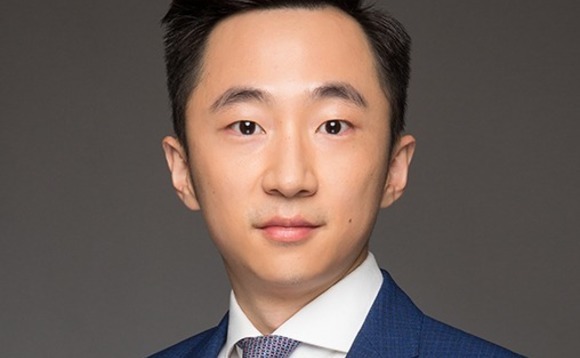
Q&A: Brookfield Asset Management's Daniel Cheng

Brookfield Asset Management recently raised USD 15bn for a fund dedicated to global energy transition. Daniel Cheng, a managing director with the firm in Shanghai, maps out likely deployment
Q: How do you define the investment mandate for the Global Transition Fund?
A: Carbon emissions are a commodity produced by every business and government agency. At a high level, the mandate is to work across all sectors, helping them reduce emissions profiles, achieve carbon reduction goals, and facilitate the transition to a net-zero state. This journey will take multiple decades and require a lot of capital. The geographies we focus on are very much in line with how our current business is set up, across all verticals. Our biggest presence is in North America and Europe, and that is where we see most of the large-scale opportunities, given energy security issues and how transition is being accelerated by externalities like the Russia-Ukraine war. However, we will make significant investments in Asia Pacific and South America as well. We have established platforms in India and China, and we are setting up capabilities elsewhere, including in Australia, Japan, and Korea. Most of our capital will go into mature areas like energy storage, wind, and solar, energy efficiency, and waste management.
Q: How do you approach investments in technology?
A: We are very open-minded, but we focus on commercially viable and scalable technologies. We've been in hydro for a long time, then in the past 10 years, we got into wind and solar, and now we are increasingly investing in distributed generation, energy storage in the form of batteries, and carbon capture. We are not averse to getting exposure to emerging asset classes that can facilitate the transition to net-zero. It means paying attention to what kind of decarbonisation technologies will have the most significant applications, and in that sense, the portfolio will continue to evolve. Today, we are interested in carbon capture, green hydrogen, and green ammonia. We would invest strategically to establish a presence so that we can move quickly when a technology becomes cost competitive and commercially scalable. There are a lot of headlines about green hydrogen, and we believe it will play a big role in facilitating energy transition, but we must be disciplined about timing.
Q: What is the strategy for working with energy intensive companies on transition?
A: Carbon capture can be applied to a lot of traditional, energy-intensive sectors that are hard to abate with intermittent renewables like wind and solar, so that is where we are investing. If we are working with a traditional utility that produces baseload power using coal or gas generation, the transition angle would be to help them build out renewables and accelerate the retirement of coal and thermal fleet.
Q: What do you want from these partnerships?
A: For any partnership, the two parties must be developing something that creates meaningful incremental value that otherwise wouldn't be available to either of them. Some examples where this could make sense for Brookfield include working with steelmaking industries on decarbonisation or with automakers on the rollout of electric vehicle [EV] charging networks. The latter is a chicken-and-egg story: you need EV uptake to skyrocket to justify building supporting infrastructure, but nobody wants to scale up EV production too much without having charging stations in place. If we can work on rolling out charging stations with large automakers that are forward-leaning in electrifying their fleets, they will have the confidence and visibility to be more aggressive in rolling out EVs.
Q: How does the China rooftop solar joint venture with warehouse operator GLP fit this profile?
A: We own one of the largest distributed power generation businesses in the US, so we knew we could pursue the same thesis in China from a technical perspective: the permitting, construction, and asset operation. We wanted to scale up quickly and rooftops are an extremely valuable resource. GLP owns the largest portfolio of industrial and logistics real estate parks in China, so their value add was that pipeline. We didn't have to put together a team to run around China knocking on doors and trying to source rooftops. There is now more than 1.5 GW of operational and development pipeline.
Q: To what extent have net-zero commitments accelerated renewables deal flow in Asia?
A: They have helped a lot, especially in making companies more focused on climate and sustainability risk from a business perspective. Australia, for example, has renewable energy targets for 2030 and progress is tracked through the issuance of large-scale generation certificates. There is enough pipeline capacity to comfortably meet those targets and everyone had expected pricing to fall off a cliff by now. But pricing has been stable, and in fact recently it went up. This is because no one thought there would be so much demand from corporate customers for renewable power. It's now cheaper than the existing carbon form of power generation and every stakeholder is concerned about climate risk. Australia has experienced unprecedented forest fires and unprecedented rainfall, so there is a lot of pressure from investors, lenders, policymakers, and communities.
Q: How much of Brookfield's renewables capacity in Asia is sold to corporate customers rather than to utilities?
A: Most of our power is sold to IPPs [independent power producers] and utilities, and that's a function of the market. In North America, corporates and utility companies are the offtake partners for a lot of our development pipeline; we aren't selling into the grid with a government or state-backed counterparty. These mechanisms are not accessible in many Asian markets. However, they will get there. For example, bilateral contracting is not widely available, but earlier this year we launched a partnership with BASF involving a large petrochemical plant they are building in Guangdong. We will develop and supply wind, solar, and storage capacity so the plant can achieve net-zero by 2025. This was only possible because the Guangdong provincial government introduced a mechanism that allows direct bilateral contracting in the procurement of power between a generator and a consumer. That is happening a bit more now across China. We have seen a step change in demand for green power from corporates globally, just in the last 2-3 years. Corporates are increasingly the driving force behind energy transition.
Q: What and where are the most exciting opportunities in Asia?
A: From a renewable energy transition perspective, Asia Pacific is relatively small compared to Brookfield's largest markets globally, but it is growing fast. The opportunity is so sizeable, anyone who wants to be in this sector must be in Asia. To get to net-zero, we must decarbonise the region. Opportunities often depend on geography and availability of land. For Japan and Korea to achieve net-zero, offshore wind is almost inevitable – they are island nations with limited land; they can't do large amounts of utility-scale onshore renewables. They will have to rely on hydrogen and ammonia as well because the sectors that make up most of their economies are power intensive and wind is intermittent. That's why they are spending a lot of time overseas trying to get ahead of the curve on these technologies. Australia is unique in that it is so rich in terms of renewables. It has land, renewable resources onshore and offshore, and the capacity to export green hydro and green ammonia. It is a very interesting jurisdiction.
Latest News
Asian GPs slow implementation of ESG policies - survey
Asia-based private equity firms are assigning more dedicated resources to environment, social, and governance (ESG) programmes, but policy changes have slowed in the past 12 months, in part due to concerns raised internally and by LPs, according to a...
Singapore fintech start-up LXA gets $10m seed round
New Enterprise Associates (NEA) has led a USD 10m seed round for Singapore’s LXA, a financial technology start-up launched by a former Asia senior executive at The Blackstone Group.
India's InCred announces $60m round, claims unicorn status
Indian non-bank lender InCred Financial Services said it has received INR 5bn (USD 60m) at a valuation of at least USD 1bn from unnamed investors including “a global private equity fund.”
Insight leads $50m round for Australia's Roller
Insight Partners has led a USD 50m round for Australia’s Roller, a venue management software provider specializing in family fun parks.







